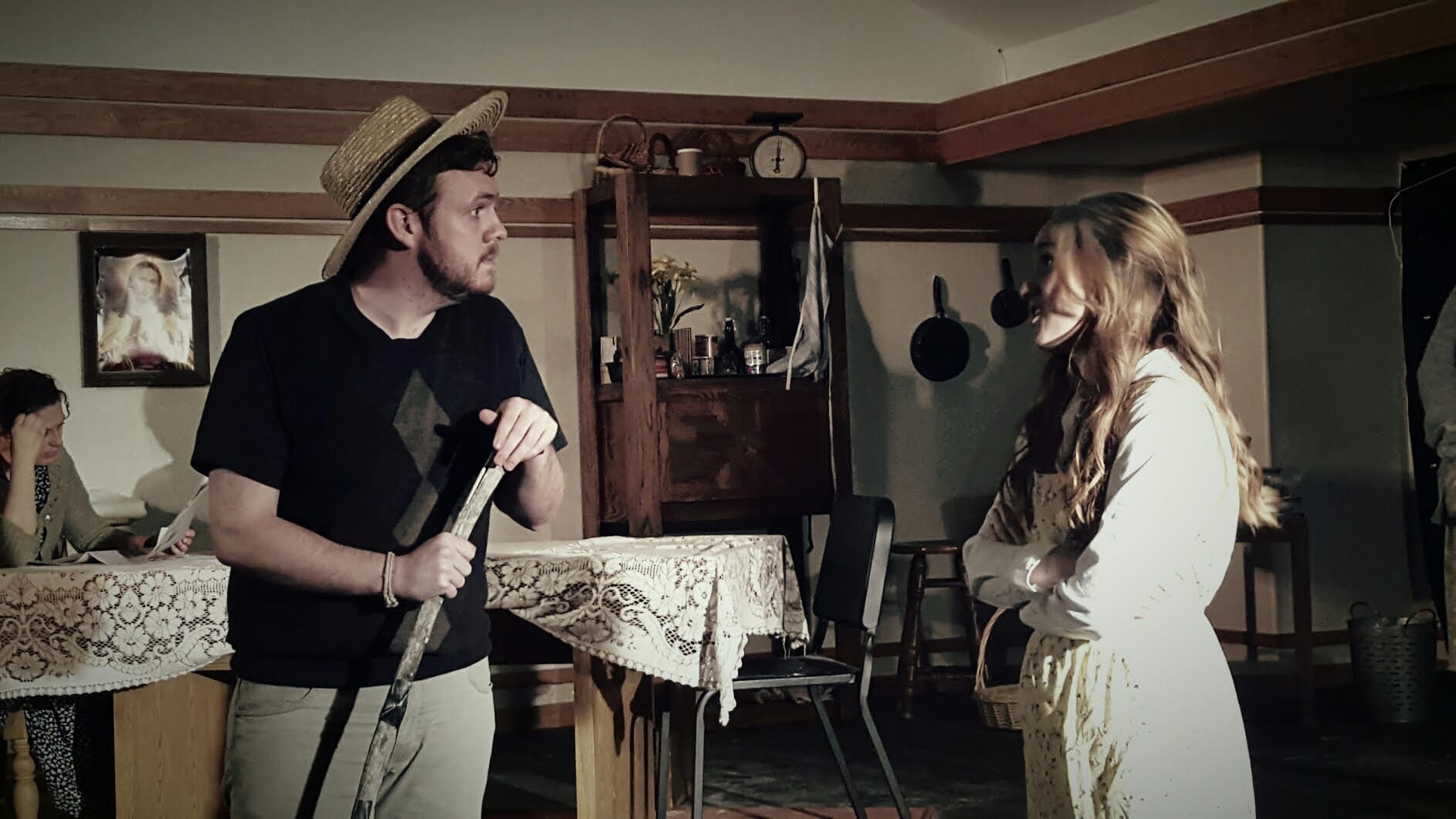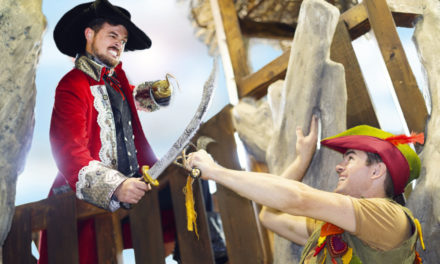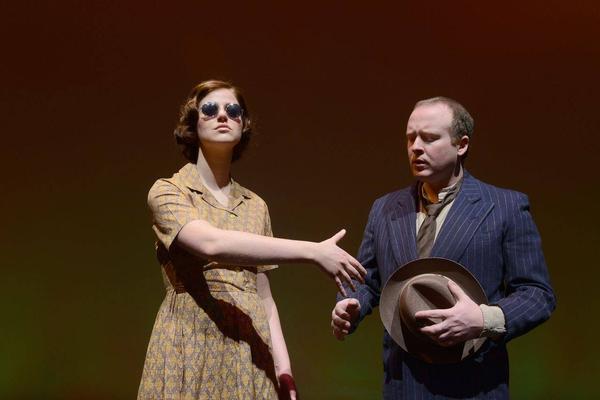HIGHLAND — Dancing at Lughnasa, by Brian Friel, shows the events of one month in the Irish Mundy household, which consists of five impoverished, unmarried sisters living together and keeping house together in the countryside. The story is told as remembered by the bastard child of Christine Mundy, Michael. His recollections make up the vast part of their story of a group of women banding together as they try to forge a home in their community and reconcile their personality differences.
I was most impressed by the co-directors’ (M. Chase and Brooke Grant) ability to foster a tight sense of community between the actors. A real cohesion existed, and every performer felt in sync one with another. Actors genuinely seemed to be listening to another, and the result was a very natural cadence—more slice-of-life than anything actor-y. Pacing kept a natural, lively flow and the transition between lively moments and more contemplative, authentic moments. Actors were able to maintain their own, distinct personalities while lending to a cohesive storytelling effect, balancing their energies and propelling the story forward at a compelling pace. Moments of silence onstage were earned, which is something rare on the Utah stage. I appreciated the reasonable tension onstage. As a former collegiate, I’ve had my share of dorm days and living with five other women. The chemistry on stage was able to replicate that taut tension with ease, but also managed to highlight a sense of genuine affection between the sisters. There is some amazing ensemble work in Dancing at Lughnasa.

Kris Wing Jennings, Dan Stratton, Brett Griffith, Cassandra Shelley Fulton, Brittanie Cooper and Lisa Nicole Thurman.
Cassandra Shelley Fulton as Kate Mundy anchored the production as the practical (and sometimes overbearing) mother figure of the household. Her staunch religious inclinations, combined with a more practical point of view allowed for a view into the more troublesome aspects of the sisters’ lives. With no income and loss of employment, it became very clear why Kate’s worries escalated. Still, a sense of love emanated in every interaction, and Fulton commanded control in whatever space she was in.
An equally powerful force met Kate in Maggie Munday, played by the talented Kris Wing Jennings. She brought a much-needed levity to the stage, an impulsive and settled presence all at once. I enjoyed Jennings’s ability to let loose and play against the conventional role of “spinster sister.” Her humor came from a sincere place, a jovial and lovely quality that made her incredibly compelling to watch. And then, when faced with a weightier memory, Jennings delivered a powerful foray into solemnity that was captivating to watch. All five actresses playing the Mundy sisters had such moments, which created believable performances that were ballasted by terrific “breakout” moments. I really appreciated the dimensionality this brought to the show.
Brett Griffith‘s Michael afforded for an easy introduction to the piece. His calm demeanor and conversational tone resulted in an affable character. Michael’s remembrance brought into question a sense of lens: what events was Michael remembering, and which events were actual events happening as the audience watched? Griffith’s young Michael was delightful and brought a fun sense of absolute innocence to the play. However, some of the conventions involving speaking to young Michael were executed better than others. A few actors had better success pantomining his presence than others, but this was a small qualm.
Of additional note was the actors’ accent, or rather lack thereof. The Mundy sisters managed to find a more authentic dialect, but the actors portraying Michael and Father Jack never really settled into an Irish cadence. There were hints of Irish to be found, but it was not consistent in execution, and distracted me from the action. I would rather all actors adhere to dialect, or none.
The performance space itself was transformative, taking what a simple platform and turning it into a warm, familial home. The interior representation (created by set designer Dan Stratton) clearly told a story of poverty, but still managed to retain a sense of love and family. Warm lighting (by lighting designer Jordan Long) added an almost sepia tone to the play, as if the memory itself was filtered through a lens. I appreciated the earthy feeling both lighting and set design afforded. The realness of props and authenticity of the setting lent to a more grounded air, and it really did feel as though I was peeking in on the intimately private moments of the Mundy family. On the other hand, some moments of blocking—particularly those on downstage left—were obscured by the audience seating arrangement, and I found myself straining to see. Such moments, however, were few and far between.
The largest issues I had with this performance seem to stem from Friel’s script. Some relationships were not inherently clear in the beginning, and it took a little while to piece together specific relationships between people. I was never entirely certain where Father Jack fit in the family; only after the show did I realized he was a brother to the Mundy clan. Once it was established that the girls were all sisters, it was easy to suspend any disbelief and group them all together as family. Additionally, the family’s dissolution came in little pieces, but some of the narrator’s interruptions seemed out of place. Why did Friel choose to place the breaks where he did, and deem it important to know the fates of characters well before the play’s end? I was engaged enough with the action happening on stage that it was almost disillusioning to know what happened to certain characters. I wanted to love the characters, but knowing their fate in advance left me feeling a little weary. Why should I invent myself in their story, knowing full well that there wasn’t a sense of fruition waiting all their hard work, and hoping and trials?
All in all, I was incredibly impressed with Highland City Arts Council’s production of Dancing at Lughnasa. The acting was some of the tightest I’ve seen in a while and really gave life to an engaging piece. Additionally, the theatre company’s staff was among the friendliest I’ve encountered and made attending feel like a special treat. Anyone wishing to see a beautifully crafted piece of realistic theater should check this production out.







